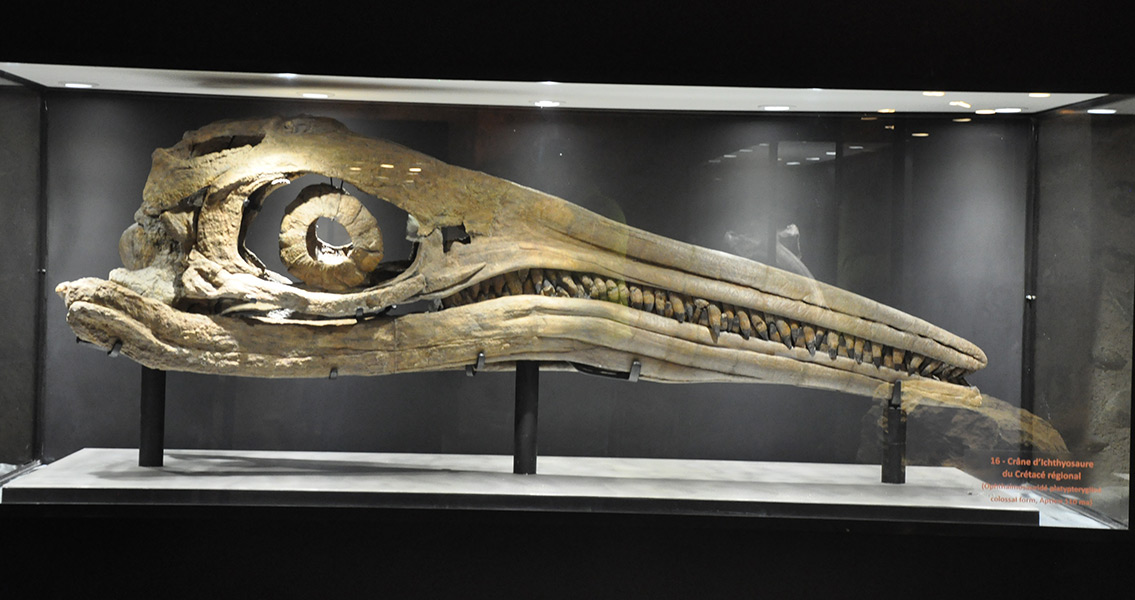<![CDATA[The nearly intact fossilized remains of an ancient, Jurassic-era marine reptile that was discovered more than 50 years ago on Scotland’s Isle of Skye are finally on display for the world to admire. The Storr Lochs Monster, the fossil of a 13-foot-long ichthyosaur that died some 170 million years in the past, was originally found on the Isle of Skye by amateur fossil collector Norrie Gillies. Discovered encased in incredibly dense stone, the monstrous fossilized skeleton had been kept in storage for decades until recently; thanks to a partnership between energy company SSE, National Museums Scotland, and the University of Edinburgh finally releasing the ichthyosaur from its stony coffin in time to be unveiled to the public this week. According to National Geographic, the Storr Lochs Monster was found by Gillies in 1966. The amateur fossil hunter, who worked for SSE at the Storr Lochs hydroelectric power station, made the discovery one Sunday afternoon on a walk along the beach north of the power station, when he noticed several vertebrae jutting from the rocks along the shore. Knowing full well that something of great significance was lurking beneath the surface, Gillies contacted the Royal Scottish Museum. Several weeks later, a team of researchers arrived on site to remove the ichthyosaur, complete in its rocky encasement. For the rest of his life, Gillies contacted the museum regularly concerning the fossil’s status, but passed away in 2011, well before researchers would have been able to show him the full creature he had stumbled upon that fateful day. He was 93 years old. The fossilized remains needed their rocky coating in order to remain intact. Removing the rock without the proper tools or guidance could have spelled disaster, thanks to the hardened sedimentary rock that had solidified around the fossil during the Paleocene, a period of time between 66 to 56 million years in the past that saw the Isle of Skye covered in lava flows. Stephen Brusatte, from the University of Edinburgh, remarked that keeping the fossil encased was the best way to keep it safe for decades. In 2015, Brusatte and several of his colleagues were contacted by Gillies’ surviving children after the scientist was in the news for a recently publicized story of his study of another ichthyosaur; Brusatte found the Storr Lochs Monster in storage and began researching the best way to remove the hardened rock safely. Contacting Nigel Larkin, a noted conservator, Brusatte began taking steps to prepare the ichthyosaur fossil for display. Funding was lacking for the project until Allan Gillies, Norrie’s son – and an electrical engineer who also worked for SSE – approached his employer for aid. With the historic legacy of Allan and his father, SSE agreed to provide the necessary funding to complete the conservation work. The now fully-revealed fossilized skeleton has paleontologists eager to examine it closely in order to draw parallels between the extinct marine reptile species and existing ones today, especially in light of how the Storr Lochs Monster is the most complete ichthyosaur skeleton ever recovered. The find is also of importance because the Middle Jurassic’s fossil record is relatively scant otherwise. Allan was only six years old when his father discovered the Storr Lochs Monster. He told National Geographic that the fossil holds an important part in his own memory; while Norrie’s not around to see the unveiling, Allan said his father would have been pleased to know that it was finally being displayed – and that the company he worked at for so long was instrumental in making it happen ]]>
Jurassic 'Seamonster' Discovered in Scotland Finally Revealed
